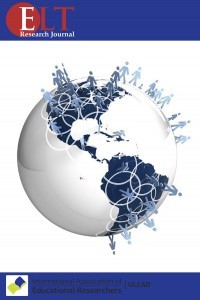A critical analysis of the English language textbooks in Andhra Pradesh, India
A critical analysis of the English language textbooks in Andhra Pradesh, India
English Language Teaching is very important because of the global status of English. English Language Teaching is a process that requires great efforts on the part of all the participants. Textbooks are the most important elements of teaching process for the aims and objectives of a course. In view of the importance of English as a foreign language in Andhra Pradesh, the researcher has examined the existing textbooks and system of teaching English in order to point out the shortcomings which have been hindering the Andhra Pradesh students from mastering the English language. The teachers of English should also be equipped with an up-to-date knowledge of ELT. The main data collection instrument was the questionnaire for class 6th of state. The student’s questionnaire was arranged on multi-option questions pattern and open-ended questions. The responses were obtained from both male and female. The aim of this questionnaire was to collect information about textbooks and teachers’ attitude towards ELT in AP. Analysis of for 6th secondary grade at the state schools. The planning is important for preparing a relevant curriculum. It should be planned according to what students need to learn. Some recommendations are made for improving the Textbooks of English as a foreign language in AP.
Keywords:
Textbooks English Language Teaching,
___
- Alamri, A. A. M, (2008). An evaluation of the sixth grade English language textbook for Saudi boys' schools. Unpublished MA thesis, King Saud University, Saudi Arabia.
- Azizifar, A., Koosha, M., & Lotfi, A. R (2010). An analytical evaluation of Iranian high school ELT textbooks from 1970 to the present. Procedia-Social and Behavioral Sciences, 3, 36-44.
- Board of Secondary Education. (2004). Syllabus Board of Secondary Education, Andhra Pradesh.
- Cunningsworth, A. (1995). Choosing your coursebook. Oxford: Heinemann. .
- Ellis, R. (1997). The empirical evaluation of language teaching materials. ELT Journal, 51, 36-42.
- Ellis, R. (2010). Second language acquisition research and language-teaching materials. In N. Harwood, (Ed.). English language teaching materials: Theory and practice (pp. 33-57). New York: Cambridge University Press.
- Garinger, D. (2010). Textbook selection for the ESL classroom. Eric Digest. Retrieved February 5, 2014 from http://www.cal.org/resources/Digest/0210garinger.html
- Goh, C. (2010). Listening as process: Learning activities for self-appraisal and self- regulation. In N. Harwood (Ed.), English language teaching materials: Theory and practice (pp.179-206). New York: Cambridge University Press.
- Govt. of Andhra Pradesh. (2010). English reader. Hyderabad, AP: Odin Press.
- Govt. of Andhra Pradesh. (2007). Syllabus for English GOI.
- Report of the National Knowledge Commission. (2005). New Delhi.
- Graves, K. (2000). Designing language courses. Canada: Newbury House.
- Hughes, R. (2010). Materials to develop the speaking skill. In N. Harwood (Ed.). English language teaching materials: Theory and practice (pp. 207-224). New York: Cambridge University Press.
- Hutchinson, T., & Torres, E. (1994). The textbook as agent of change. ELT Journal, 48, 315- 328.
- Littlejohn, A. (1998). The analysis of language teaching materials: Inside the Trojan horse. In B. Tomlinson (Ed.), Materials development in language teaching (pp. 190-216). Cambridge: Cambridge University Press.
- Munby, J. (1985). Communicative syllabus design. Cambridge: Cambridge University Press.
- McDonough, J., & Shaw, C. (2003). Materials and methods in ELT: A teacher's guide. Wiley-Blackwell.
- McGrath, I. (2002). Materials evaluation and design for language teaching. Edinburgh: Edinburgh University Press.
- Rechards, J. C., Platt J., & Platt, H. (1991). Longman dictionary of language teaching and applied linguistics. Longman.
- Singh, Y. K. (2005). Teaching of English. New Delhi: APH Publishing.
- Tomlinson, B. (2003). Developing materials for language teaching. Continuum.
- Tomlinson, B. (2001). Materials development. In R. Carter & D. Nunan (Eds.), Teaching English to speakers of other languages (pp. 66-71). Cambridge: Cambridge University Press.
- Tomlinson, B. (2010). Principles of effective materials development. In Harwood, N. (Ed.), English language teaching materials: Theory and practice (pp. 81-108). New York: Cambridge University Press.
- Tribble, C. (2010). A genre-based approach to developing materials for writing. In Harwood, N. (Ed.), English language teaching materials: Theory and practice (pp. 157-176). New York: Cambridge University Press.
- Yayın Aralığı: Yılda 2 Sayı
- Başlangıç: 2012
- Yayıncı: Uluslararası Eğitim Araştırmacıları Derneği
